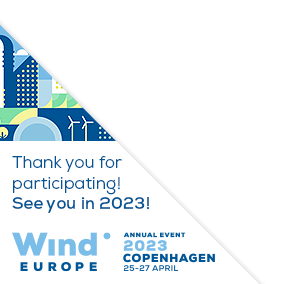Posters
Siblings:
ProceedingsProgrammeSpeakersPostersContent PartnersGlobal Markets TheatreWindTalks for InnovationProgramme Committee & Abstract ReviewersSpeaker's DashboardCome meet the poster presenters to ask them questions and discuss their work
Check the programme for our poster viewing moments. For more details on each poster, click on the poster titles to read the abstract. On Wednesday, 6 April at 15:30-16:15, join us on Level 3 of the Conference area for the Poster Awards!

PO262: Machine learning based met data anomaly labelling
Ana Talayero Navales, Head of Analysis & Optimization of Renewable Energy Group sub division Wind Energy, CIRCE
Abstract
Data preprocessing is the initial and utmost critical phase of wind resource assessment and wind power curve performance analysis. Without ensuring high quality and site representative data availability, an evaluation for the wind resource potential of a wind farm site means investment decision making involving a great deal of uncertainty. The current practice in the field is to use client preferences-based filtering rules and via data scanning by manual labouring of data field experts. Although rule-based (if-else, interval-based) pre-filtering applications can be found in some commercial software, these rules are also limited for addressing the needed preprocessing requirements fully. Therefore, this process is time-consuming and causes inefficient resource allocation considering the manual scanning process performed by data scientists & experts. CIRCE has provided this service for more than a decade in the wind resource assessment market. By knowing the market's needs and nature of the service, CIRCE can define efficient classifiers generated by applying machine learning algorithms to unfiltered and filtered data. To the best of our knowledge, such a procedure is not developed and applied to meteorological data preprocessing up until this study. In normal conditions, such service requires minimum 90 minutes of an expert for a revision of a 1-month data, nevertheless via the proposed classifiers this time need can be reduced to couple of seconds.










Follow the event on: